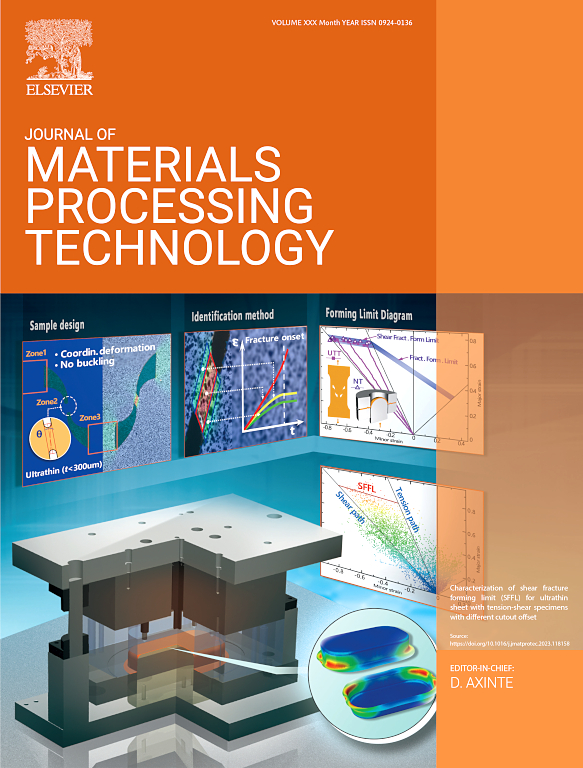Reusability of Ti-6Al-4V powder in laser powder bed fusion: Influence on powder morphology, oxygen uptake, and mechanical properties
IF 6.7
2区 材料科学
Q1 ENGINEERING, INDUSTRIAL
Journal of Materials Processing Technology
Pub Date : 2024-11-19
DOI:10.1016/j.jmatprotec.2024.118672
引用次数: 0
Abstract
The reusability of Ti-6Al-4V powder in laser powder bed fusion (L-PBF) processes is essential for achieving economic efficiency and maintaining consistent product quality. While powder reuse offers clear cost benefits, it also raises concerns about preserving material quality and consistency across multiple build cycles. This study, therefore, investigates the effects of repeated powder reuse on key parameters, including powder morphology, oxygen uptake, and mechanical properties. The results demonstrate that the repeated reuse of the powder results in a decrease in satellite particles and an increase in particle deformation. Oxygen content progressively increases with each cycle; however, smooth particles maintain relatively stable oxygen levels, whereas rough particles exhibit a more pronounced rise in oxygen content. Mechanical testing shows that as oxygen levels increase, tensile strength improves, yet elongation decreases. This observed increase in strength can be partially attributed to oxygen-induced phase transformations, where localized oxygen enrichment promotes the formation of the face-centered cubic (FCC) β phase, contributing to material strengthening. These findings emphasize the importance of optimizing powder reuse strategies, particularly in controlling oxygen levels, to achieve the optimal balance between strength and ductility in high-quality material properties.
激光粉末床熔融中 Ti-6Al-4V 粉末的重复使用性:对粉末形态、吸氧量和机械性能的影响
在激光粉末床熔融(L-PBF)工艺中,Ti-6Al-4V 粉末的可重复使用性对于实现经济效益和保持稳定的产品质量至关重要。虽然粉末重复使用具有明显的成本优势,但它也引发了在多个制造周期中保持材料质量和一致性的问题。因此,本研究调查了粉末重复使用对粉末形态、吸氧量和机械性能等关键参数的影响。结果表明,粉末的重复使用会导致卫星颗粒的减少和颗粒变形的增加。氧含量随着每次循环而逐渐增加;然而,光滑的颗粒能保持相对稳定的氧含量,而粗糙的颗粒则表现出更明显的氧含量上升。机械测试表明,随着氧含量的增加,拉伸强度提高,但伸长率降低。观察到的这种强度增加可部分归因于氧引起的相变,即局部氧富集促进了面心立方体(FCC)β 相的形成,从而增强了材料的强度。这些发现强调了优化粉末再利用策略的重要性,特别是在控制氧含量方面,以实现高质量材料性能中强度和延展性之间的最佳平衡。
本文章由计算机程序翻译,如有差异,请以英文原文为准。
求助全文
约1分钟内获得全文
求助全文
来源期刊

Journal of Materials Processing Technology
工程技术-材料科学:综合
CiteScore
12.60
自引率
4.80%
发文量
403
审稿时长
29 days
期刊介绍:
The Journal of Materials Processing Technology covers the processing techniques used in manufacturing components from metals and other materials. The journal aims to publish full research papers of original, significant and rigorous work and so to contribute to increased production efficiency and improved component performance.
Areas of interest to the journal include:
• Casting, forming and machining
• Additive processing and joining technologies
• The evolution of material properties under the specific conditions met in manufacturing processes
• Surface engineering when it relates specifically to a manufacturing process
• Design and behavior of equipment and tools.
 求助内容:
求助内容: 应助结果提醒方式:
应助结果提醒方式:


